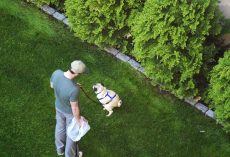There are a lot of things to ponder when considering a daycare facility for your pup; attention, activity and supervision to name a few things. Take a look at some of the benefits Rover might enjoy! Also note some red flags too.
Benefits
You could think of most dogs today as “unemployed.” Dogs have been traditionally bred for jobs—typically in hunting, livestock herding, protection or guarding. But their main job today is Couch Potato! Unfortunately, boredom and excess energy are two common reasons for behavior problems in pet dogs.The main benefits daycare can provide are:
•Relief from boredom
•Relief from loneliness and the anxiety that loneliness can cause in dogs (including separation anxiety)
•Socialization with people
•Much-needed exercise and socialization with other dogs
•Prevention of destructive behavior in the house when unsupervised
•Relief from guilt for pet parents who feel badly about leaving their dogs home alone all dayIs Daycare Right for Your Dog?
Good candidates for daycare are healthy, spayed or neutered and well-socialized dogs who really enjoy other dogs and seek interaction with them at every opportunity. Young dogs often adjust to the daycare environment better than older ones. If your dog is a regular at dog parks, and she plays a lot and enjoys herself there, then daycares are probably ideal for her.However, some dogs do better sleeping at home alone than spending the day in the company of other dogs. If your dog has ever bitten another dog; is regularly aggressive toward other dogs (snarling, growling or snapping); is fearful, tense or anxious; or tends to avoid or just tolerate other dogs, then daycare is probably not right for her. Hiring a dog walker, asking friends or neighbors to visit your dog in the middle of the day, coming home at lunch, or taking your dog to a boarding kennel may be better options for you.
Other unsuitable candidates for daycare include:
•Unvaccinated puppies
•Females in heat and unneutered males
•Under socialized dogs who haven’t had sufficient pleasant experiences with a wide variety of other dogs
•Bullies who tend to pick on other dogs
•“Dog dorks” who lack good social skills and whose intensity and energy often seem to annoy or scare other dogs
•“Fun police” dogs (often herding breeds) who run around trying to control the movements of other dogs and interfere with their playingWhat to Look For
Knowledgeable personnel are crucial to a safe, professional and enjoyable daycare business. Ask whether your daycare’s employees have received professional training from seminars or videos by experts with academic credentials in the field of animal behavior, such as those with a doctoral or master’s degree in animal behavior, Certified Applied Animal Behaviorists (CAABs) or, at minimum, Certified Professional Dog Trainers (CPDTs). Your daycare’s employees must understand basic canine communication, including body postures and signals. If employees are unable to accurately interpret dogs’ body language and social communication, then they won’t know what’s going on among the dogs. Lack of such awareness is risky and could be downright dangerous. It could lead to chronic stress for dogs who are scared or overwhelmed but forced to continue to interact with other dogs because the staff don’t recognize their discomfort. And it could lead to serious fights breaking out because employees don’t see tensions rising among the dogs and, therefore, don’t intervene to calm things down. Having daycare employees who don’t understand dog communication would be like trying to run a business with staff who speak a different language than your customers!You also want to look for employees who are well trained in dog handling and behavior management and who closely monitor dog activity at all times. Ask about the daycare’s relationships with local Certified Professional Dog Trainers. Did the daycare consult with a reputable professional trainer or behaviorist to develop their playgroup guidelines or staff training programs? Ask for details about the facility’s dog handling and training methods to confirm that you’re comfortable with them. You might ask several “what if” questions like: What would you do if my dog barks too much? What would you do if another dog keeps bothering my dog? What would you do if my dog growls at another dog?
A rule-of-thumb for adequate staffing is to have, at minimum, one employee per 10 to15 dogs.
Because there are no national standards for doggy daycares it’s important to do your homework. If you go on over to ASPCA website it will give you some tips and advice regarding what you should look for in a good doggie daycare. The site will touch on health policies, floors and fencing and also the environment that is best for your pooch.
It is also important to look into the daycare’s safety policies and breed bans. Unfortunately, not all facilities are open to all dogs.
We do what we do for our pets out of love – so let’s not stop when they are not in our field of vision!











Sonja M Thornton
- Edit
Brian Thornton
Heather Holland
- Edit
I am a Pug Mama to my 9 year old Daisy Holland
Greg Lockrey
- Edit
I’m retired and with my two all day. Guess what? They sleep all day…